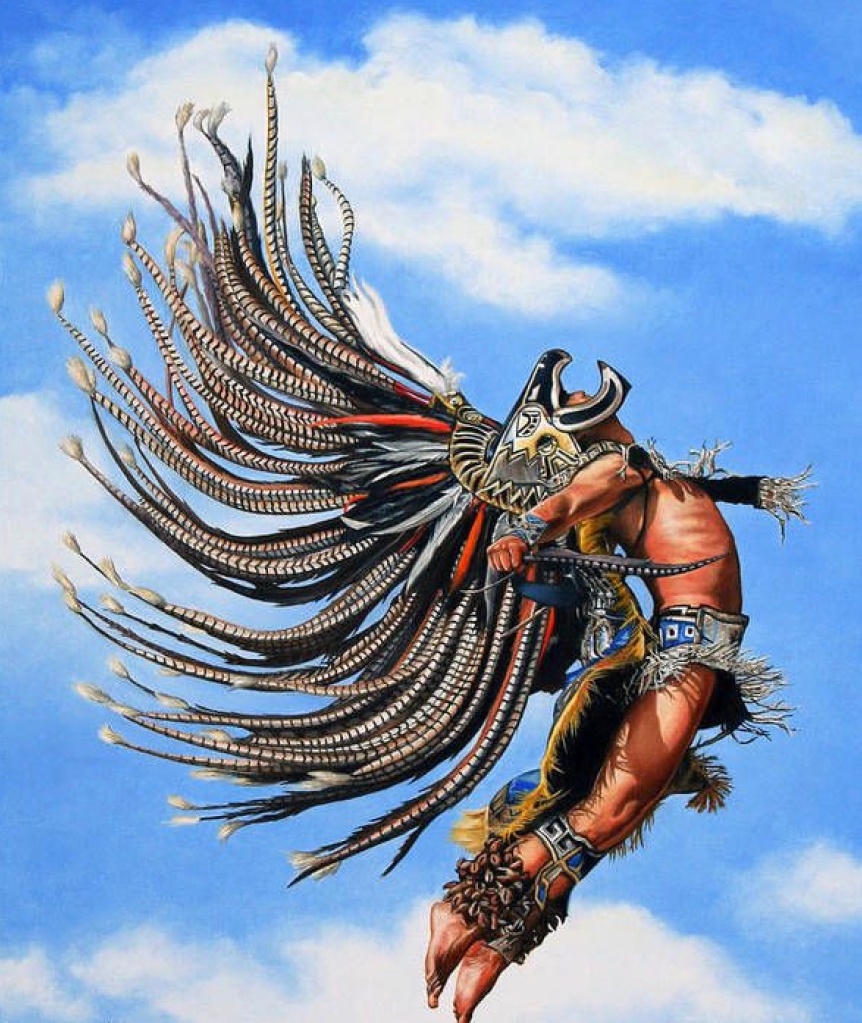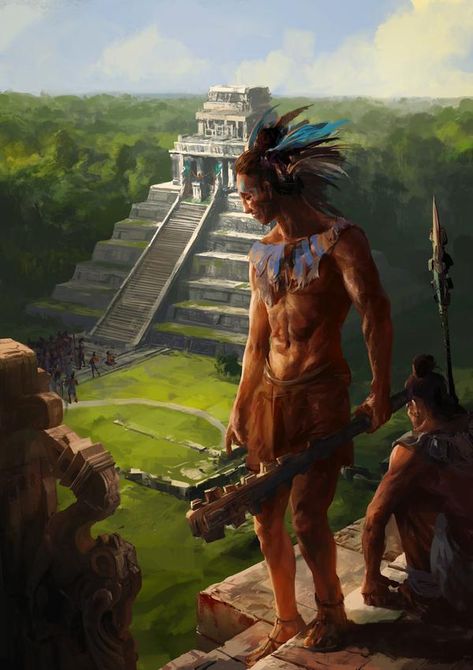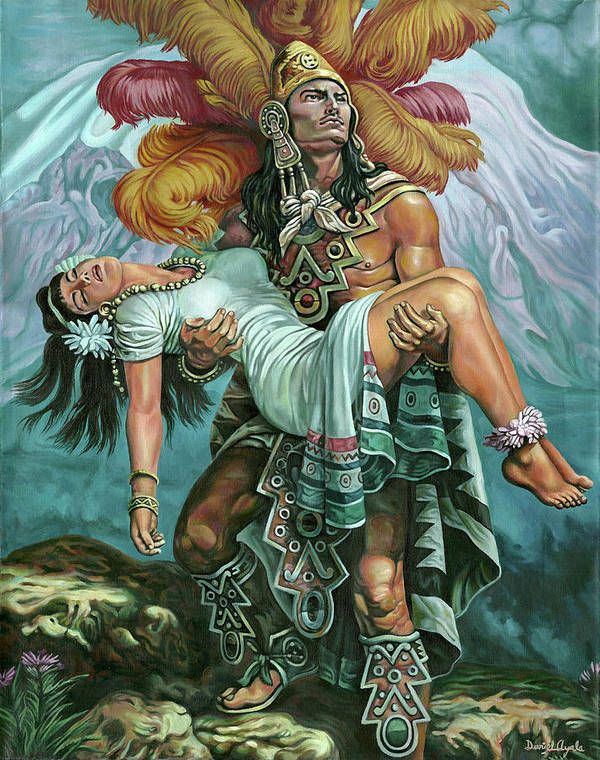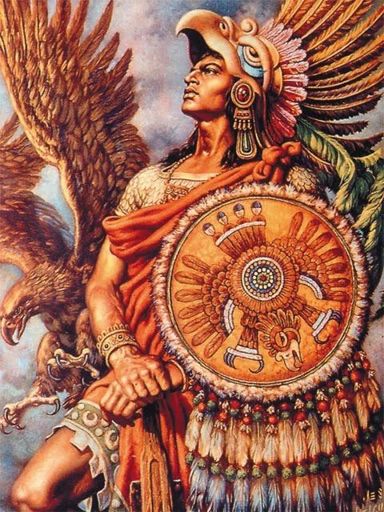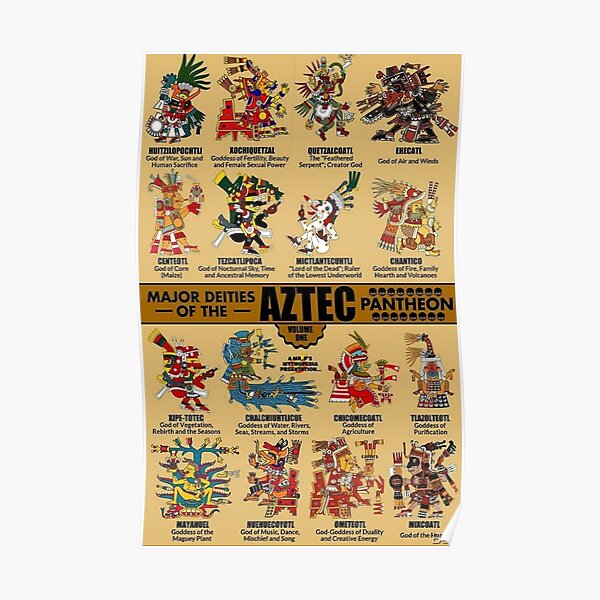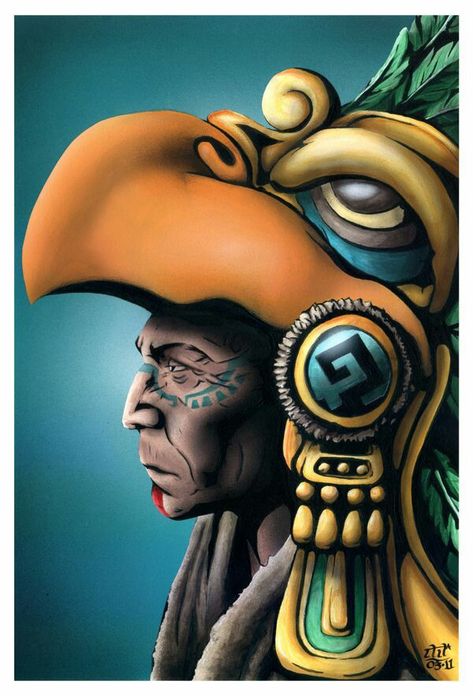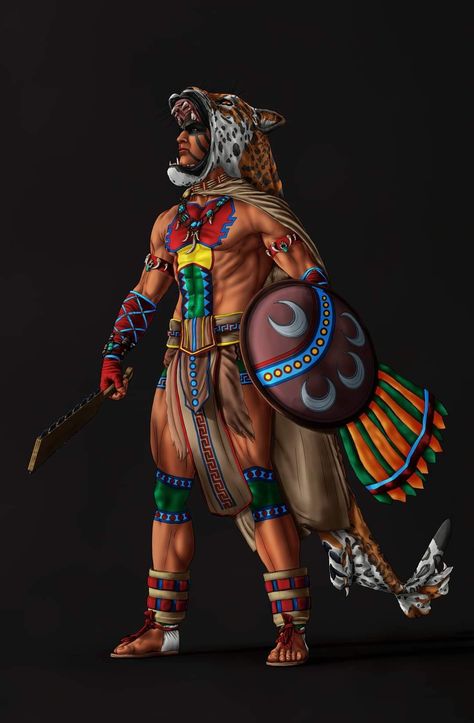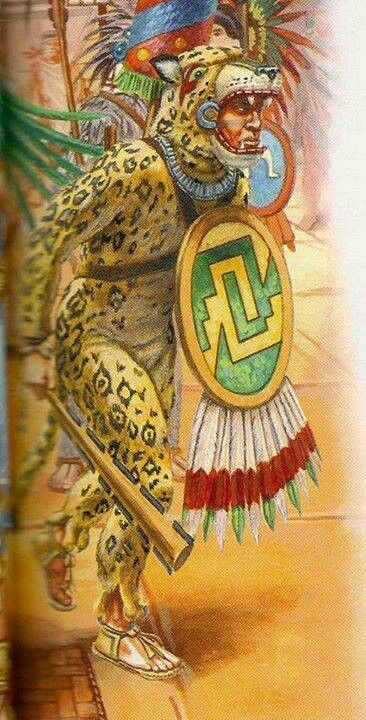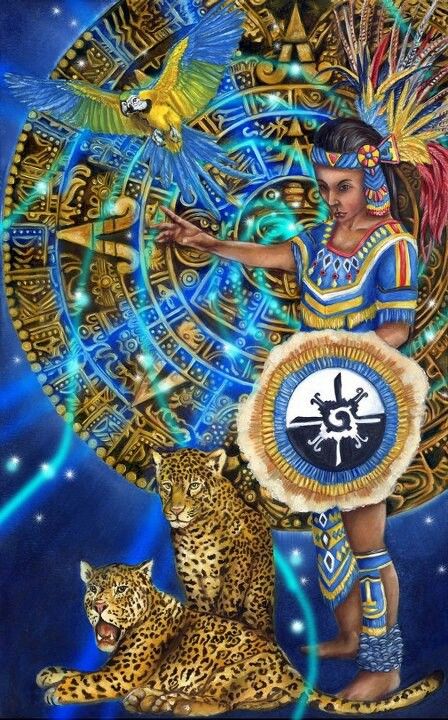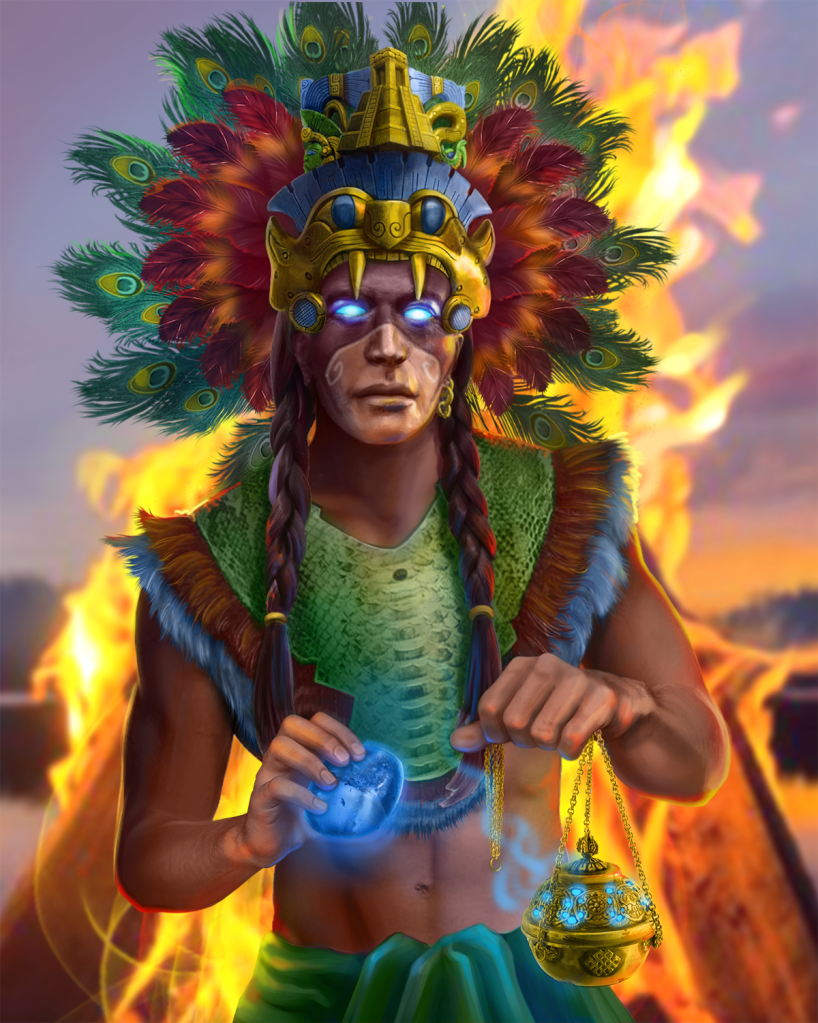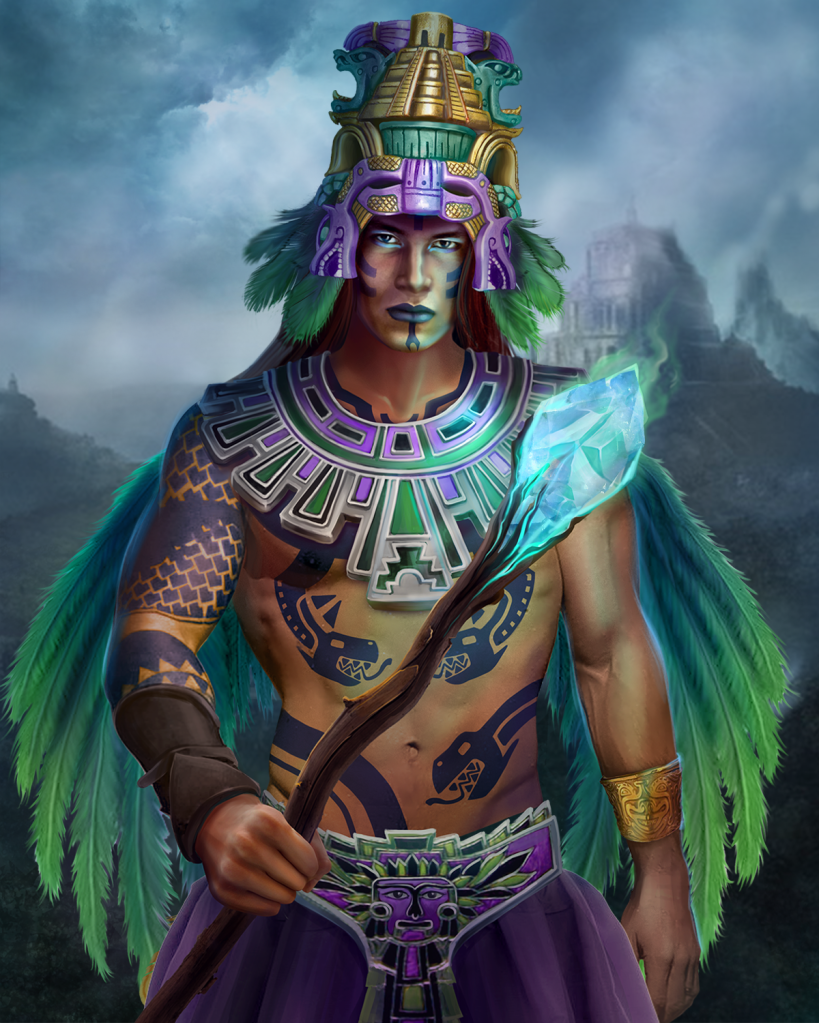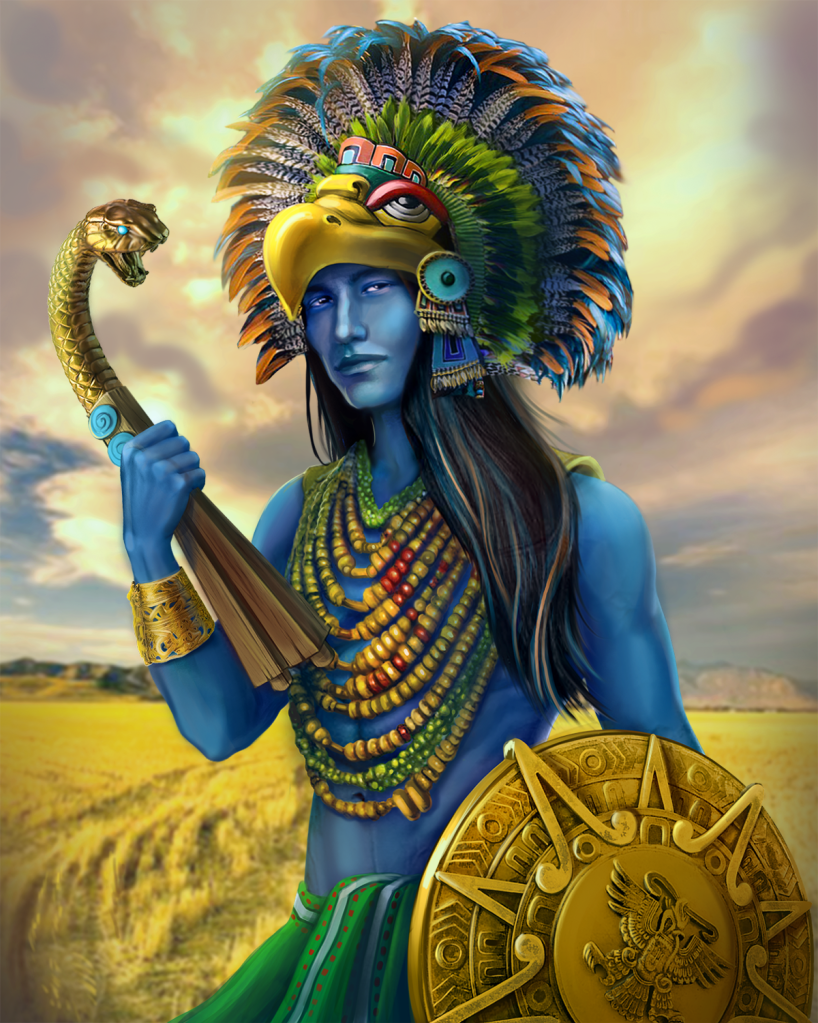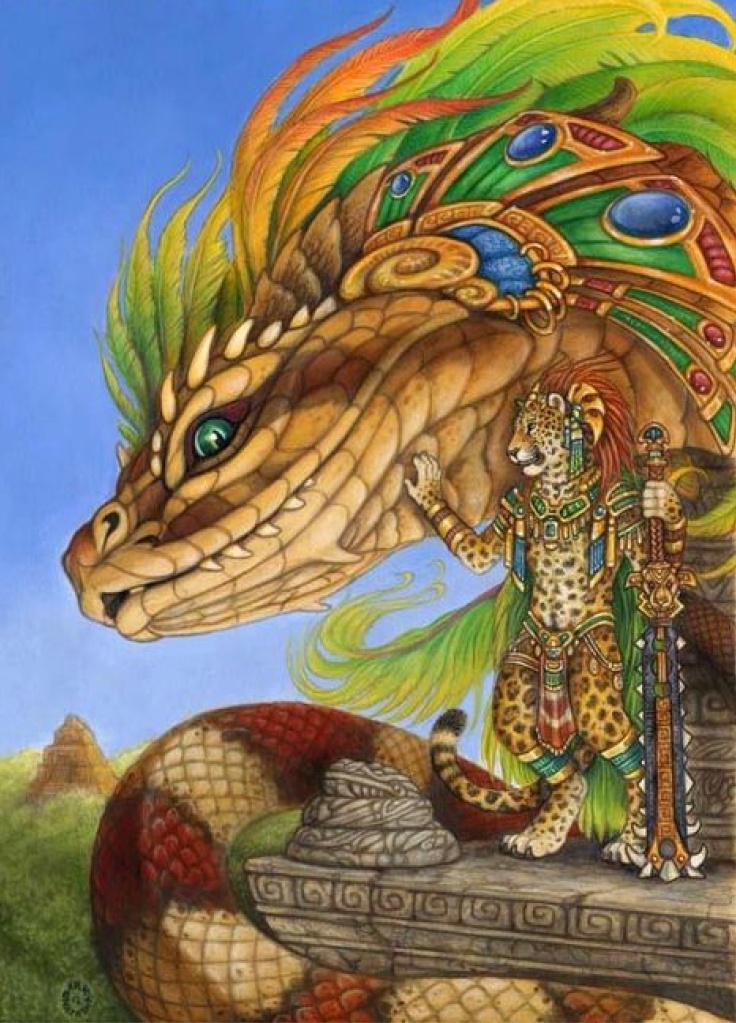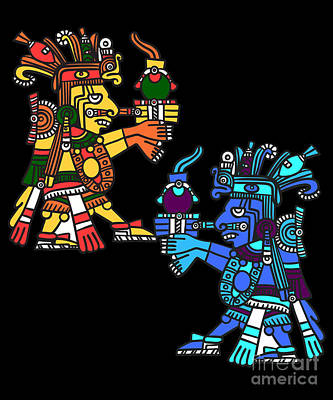The four main Aztec gods are considered to be Huitzilopochtli, Quetzalcoatl, Tezcatlipoca, and Xipe Totec. These gods were the children of Ometecuhtli. Though the Olmecs (1250–200 bc) were the first civilization in Mexico, the Aztecs (1325–1521) – Mesoamerica’s last imperial civilization and the most significant of the militaristic post-Classic period – are probably who first come to mind when we think of great empires of that region. Like other Mesoamerican cultures, Aztec gods and myths reflected a natural philosophy where ideas concerning life and death were linked symbolically to the earth, sky and sea in a grand cosmic scheme. Their religion was dominated by the tribal war god Huitzilopochtli, the rain/fertility god Tlaloc and the supreme deity Tezcatlipoca, the Lord of the Smoking Mirror.
Important Aztec Gods and Goddesses
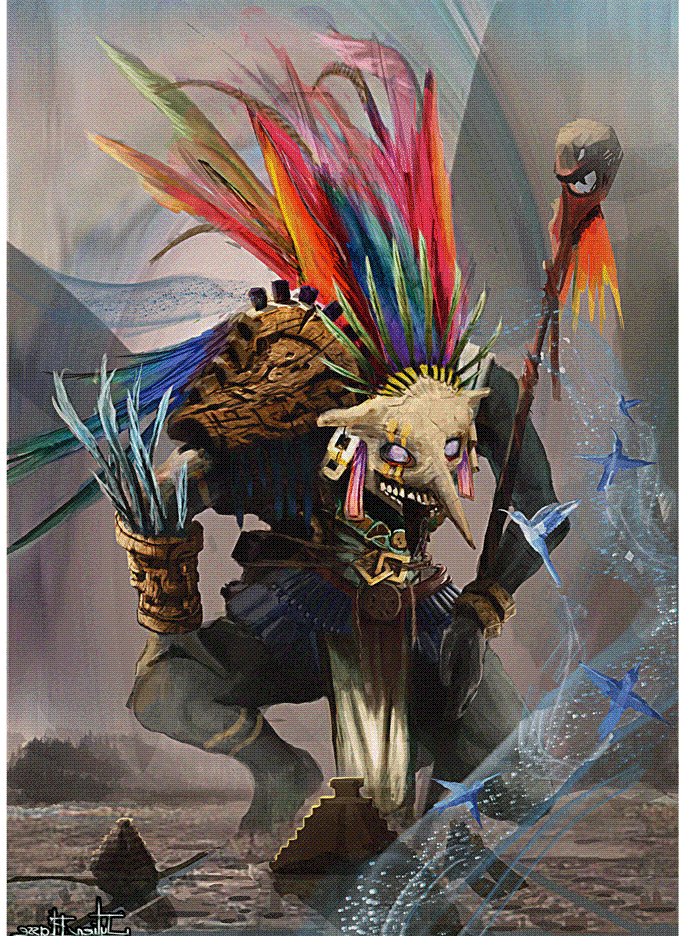
The Aztecs, the Late Postclassic civilization that the Spanish conquistadors met in Mexico in the 16h century, believed in a complex and diversified pantheon of gods and goddesses. Scholars studying the Aztec (or Mexica) religion have identified no fewer than 200 gods and goddesses, divided into three groups. Each group supervises one aspect of the universe: the heaven or the sky; the rain, fertility and agriculture; and, finally, war and sacrifice. Often, the origins of the Aztec gods can be traced back to those from earlier Mesoamerican religions or shared by other societies of the day. Such deities are known as pan-Mesoamerican gods and goddesses. The following are the most important of the 200 deities of the Aztec religion.
Top 10 Deities of Mexica Mythology

Huitzilopochtli, Father of the Aztecs
Huitzilopochtli (pronounced Weetz-ee-loh-POSHT-lee) was the patron god of the Aztecs. During the great migration from their legendary home of Aztalan, Huitzilopochtli told the Aztecs where they should establish their capital city of Tenochtitlan and urged them on their way. His name means “Hummingbird of the Left” and he was the patron of war and sacrifice. His shrine, on top of the pyramid of the Templo Mayor in Tenochtitlan, was decorated with skulls and painted red to represent blood.
:max_bytes(150000):strip_icc():format(webp)/Huitzilopochtli-58b092905f9b586046d41fa2.jpg)
Tlaloc, God of Rain and Storms
Tlaloc (pronounced Tláh-lock), the rain god, is one of the most ancient deities in all Mesoamerica. Associated with fertility and agriculture, his origins can be traced back to Teotihuacan, the Olmec and the Maya civilizations. Tlaloc’s main shrine was the second shrine after Huitzilopochtli’s, located on top of the Templo Mayor, the Great Temple of Tenochtitlan. His shrine was decorated with blue bands representing rain and water. The Aztec believed that the cries and tears of newborn children were sacred to the god, and, therefore, many ceremonies for Tlaloc involved the sacrifice of children.
:max_bytes(150000):strip_icc():format(webp)/Tlaloc-58b093623df78cdcd8c75a7d.jpg)
Tonatiuh, God of the Sun
Tonatiuh (pronounced Toh-nah-tee-uh) was the Aztec sun god. He was a nourishing god who provided warmth and fertility to the people. In order to do so, he needed sacrificial blood. Tonatiuh was also the patron of warriors. In Aztec mythology, Tonatiuh governed the era under which the Aztec believed to live, the era of the Fifth Sun; and it is Tonatiuh’s face in the center of the Aztec sun stone.
:max_bytes(150000):strip_icc():format(webp)/Tonatiuh--58b094895f9b586046d92624.jpg)
Tezcatlipoca, God of Night
Tezcatlipoca (pronounced Tez-cah-tlee-poh-ka)’s name means “Smoking Mirror” and he is often represented as an evil power, associated with death and cold. Tezcatlipoca was the patron of the night, of the north, and in many aspects represented the opposite of his brother, Quetzalcoatl. His image has black stripes on his face and he carries an obsidian mirror.
:max_bytes(150000):strip_icc():format(webp)/Teotihuacan_-_Chalchiuhtlicue-21856052326246dca8fbc55f81dbcbeb.jpg)
Chalchiuhtlicue. Goddess of Running Water
Chalchiuhtlicue (pronounced Tchal-chee-uh-tlee-ku-eh) was the goddess of running water and all aquatic elements. Her name means “she of the Jade Skirt”. She was the wife and/or sister of Tlaloc and was also the patroness of childbirth. She is most often illustrated wearing a green/blue skirt from which flows a stream of water.
:max_bytes(150000):strip_icc():format(webp)/Black_Tezcatlipoca-f07f2c8a50a44ba48efd45e02a8d4af7.jpg)
Quetzalcoatl, The Feathered Serpent
Quetzalcoatl (pronounced Keh-tzal-coh-atl), “the Feathered Serpent”, is probably the most famous Aztec deity and is known in many other Mesoamerican cultures such as Teotihuacan and the Maya. He represented the positive counterpart of Tezcatlipoca. He was the patron of knowledge and learning and also a creative god. Quetzalcoatl is also linked to the idea that the last Aztec emperor, Moctezuma, believed that the arrival of the Spanish conquistador Cortes was the fulfilling of a prophecy about the return of the god. However, many scholars now consider this myth as a creation of the Franciscan friars during the post-Conquest period.
:max_bytes(150000):strip_icc():format(webp)/Quetzalcoatl_magliabechiano-a5e3f3ad4a654235b0ba28375ef96ca4.jpg)
Xipe Totec, God of Fertility and Sacrifice
Xipe Totec (pronounced Shee-peh Toh-tek) is “Our Lord with the flayed skin.” Xipe Totec was the god of agricultural fertility, the east and the goldsmiths. He is usually portrayed wearing a flayed human skin representing the death of the old and the growth of the new vegetation.
:max_bytes(150000):strip_icc():format(webp)/Xipe-totec-577b9cb43df78cb62cfd8a2b.png)
Mayahuel, Goddess of Maguey
Mayahuel (pronounced My-ya-whale) is the Aztec goddess of the maguey plant, the sweet sap of which (aguamiel) was considered her blood. Mayahuel is also known as “the woman of the 400 breasts” to feed her children, the Centzon Totochtin or “400 rabbits”.
:max_bytes(150000):strip_icc():format(webp)/Mayahuel.svg-cc4982d48e39401194a31532d2ef82c3.png)
The Civatateo were Aztec vampires, the most vampiric of all the Aztec deities. They were hideous creatures with pale faces, arms and hands covered in white chalk (called ticitl) and crossbones painted upon their tattered dresses. But, believe it or not, they were once beautiful noblewoman. But these lovely women died in childbirth and therefore were doomed to return as a horrific Civatateo. They were said to be servants of the gods Tezcatlipoca and Tlazolteotl. Tezcatlipoca being the god of the moon, nocturnal sky, god of the ancestral memory, god of time and the Lord of the North. Tlazolteotl was the goddess of the moon, of ritual cleansing (she was known as “the Eater of Filth”), human fertility and of sexuality. As the god’s servants, the Civatateo had the magical powers of a priest. The Civatateo were also given the honorific title of civapipiltin (princess) for dying in childbirth.
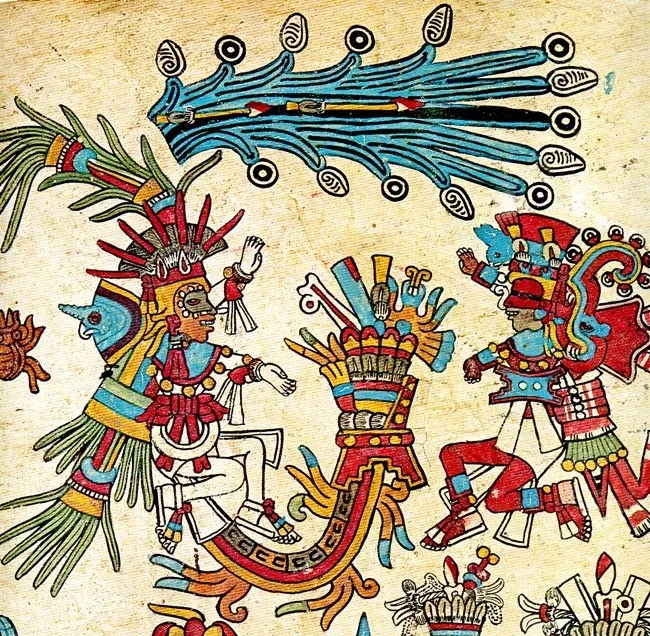
Tlaltecuhtli, Earth Goddess
Tlaltechutli (Tlal-teh-koo-tlee) is the monstrous earth goddess. Her name means “The one who give and devours life” and she required many human sacrifices to sustain her. Tlaltechutli represents the surface of the earth, who angrily devours the sun every evening to give it back the next day.
:max_bytes(150000):strip_icc():format(webp)/Tlaltecuhtli-56a023b73df78cafdaa04910.jpg)
First of all, let it be known that the Aztecs were never called “Aztecs” in their time. They were known as the Mexica. The various ethnic groups of Central Mexico were generally known as the Nahua and their language is called Nahuat Meaning “Clear Speech”. The Mexica (Mēxihcah in Nahuatl) that dominated the valley of Central Mexico at the time of European contact only migrated there sometime in the mid 1200s, from an unknown northern area that they referred to as Aztlán. Much of their culture was adopted from the surrounding civilizations, or descended from older ones like the Toltecs

Cosmology
Aztec theology postulated an eternity which, however, was not without its epochs. It was thought to be broken up into a number of aeons, each of which depended upon the period of duration of a separate “sun.” No agreement is noticeable among authorities on Mexican mythology as to the number of these “suns,” but it would appear as probable that the favourite tradition stipulated for four “suns ” or epochs, each of which concluded with a national disaster-flood, famine, tempest, or fire. The present veon, they feared, might conclude upon the completion of every ” sheaf ” of fifty-two years, the ” sheaf ” being a merely arbitrary portion of an veon.
The period of time from the first creation to the current aeon was variously computed as 15,228, 2386, or 1404 solar years, the discrepancy and doubt arising because of the equivocal nature of the numeral signs expressing the period in the pinturas or native paintings. As regards the sequence of “suns” there is no more agreement than there is regarding their number. The Codex Vaticanus states it to have been water, wind, fire, and famine. Humboldt gives it as hunger, fire, wind, and water; Boturini as water, famine, wind, and fire; and Gama as hunger, wind, fire, and water.
Xochiquetzal Goddess

The goddess Xochiquetzal was one of the most important deities in the Aztec pantheon. Her name, pronounced show-chee-ket-zal, is a combination of the Nahuatl worlds for ‘flower’ and ‘quetzal bird.’ The quetzal bird has beautiful feathers, so both roots of her name indicate grace and beauty. Perhaps unsurprisingly, she was the Aztec fertility goddess, also serving as the goddess of erotic love, and household arts. Though she was very important within Aztec mythology, her origin story is unclear, and may have been lost in the wake of the Spanish conquest. It does seem that Tamoanchan, a lush paradise somewhere to the west, was her birthplace. Interestingly, Tamoanchan is a Mayan word, indicating that the Aztecs did not invent Xochiquetzal. As the goddess of such important things as pregnancy and weaving, it’s not surprising that she had an ancient origin.




